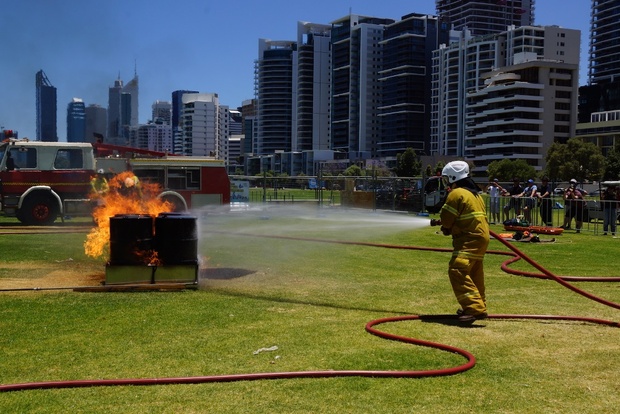DMP's draft code and evaluation tool will help guide emergency preparedness in the resources industry.
| Date: | Thursday, 01 December 2016 |
|---|
Ensuring the resources industry is able to respond to onsite emergencies was the focus of an information session hosted by the Department of Mines and Petroleum.
The session included the launch of a draft code of practice Emergency preparedness for mines in Western Australia and an evaluation tool for assessing emergency training exercises at Major Hazard Facilities and other dangerous goods sites.
The draft code of practice is available for public comment until 3 February 2017.
Mines Safety Director and State Mining Engineer Andrew Chaplyn said the code aims to enhance the planning, implementation and maintenance of emergency systems.
"The code has been coordinated by the department’s Resources Safety Division and has had significant input from emergency response coordinators and trainers," Mr Chaplyn said.
"We are also encouraging industry to provide us with their feedback."
The evaluation tool was created to assist Major Hazard Facilities and other dangerous goods sites assess emergency response exercises.
This enables sites to gauge the adequacy of emergency response plans, how well they are implemented and what improvements could be made.
The draft code of practice and the evaluation tool were launched at an information session organised by the department to coincide with the Mining Emergency Response Competition (MERC).
The two-day competition is designed to test the skills of emergency response teams.
DMP Acting Director General Dr Tim Griffin opened the information session and said it was an important opportunity for industry and the department to discuss incident management and emergency response capabilities.
"It is critical that all mining companies, especially those with remote underground sites, have risk-based emergency management systems in place," he said.
"This includes ensuring companies have the necessary resources for those systems and competent emergency response teams.
"The ultimate aim of the code is to offer a solid theoretical base on which companies can build the practical knowledge gained through training and events such as MERC."
Dr Griffin said the evaluation tool provided benefits to industry and the department when reviewing emergency response exercises, and helps identify areas that need to be addressed.


